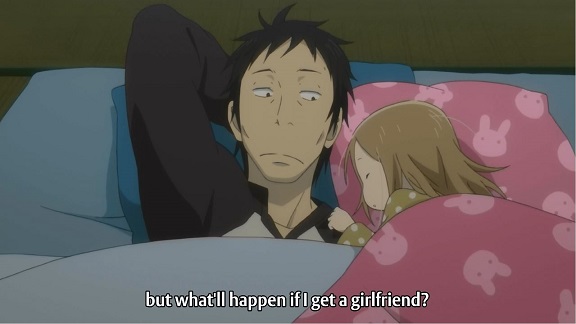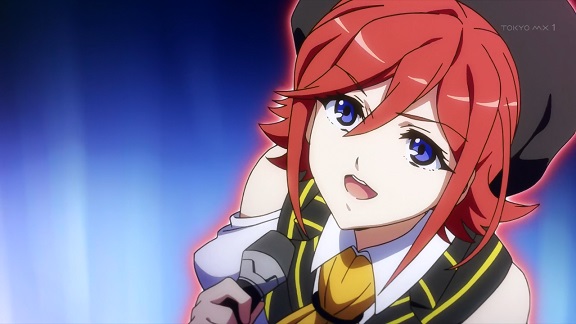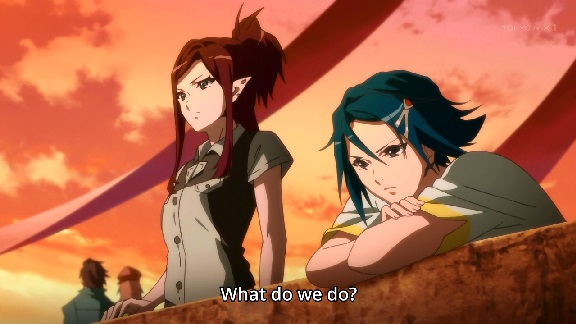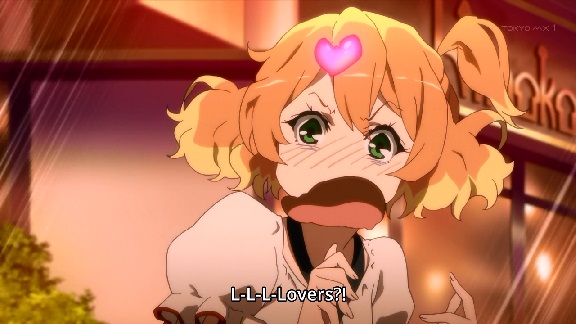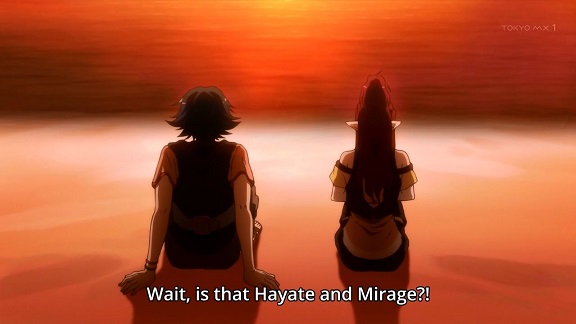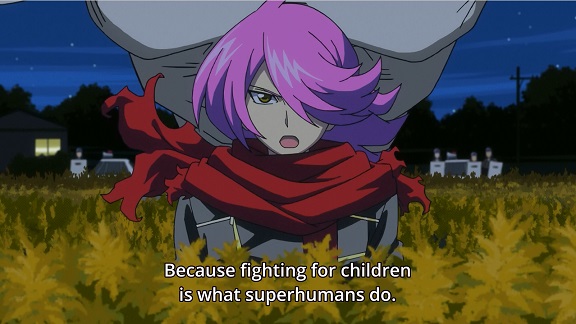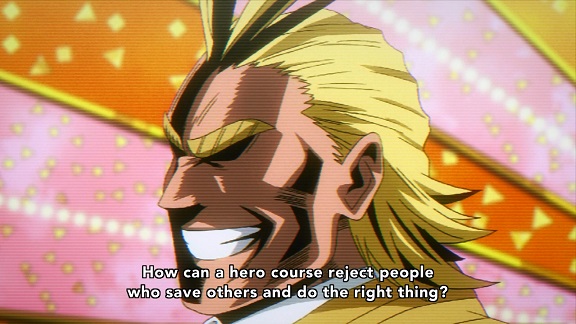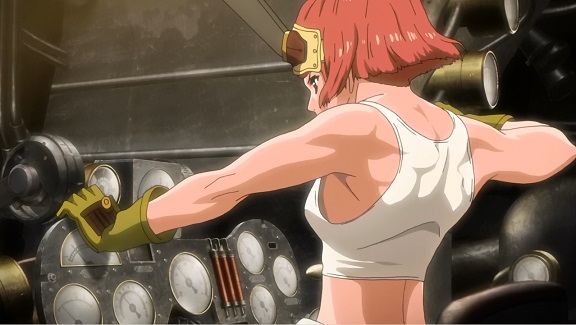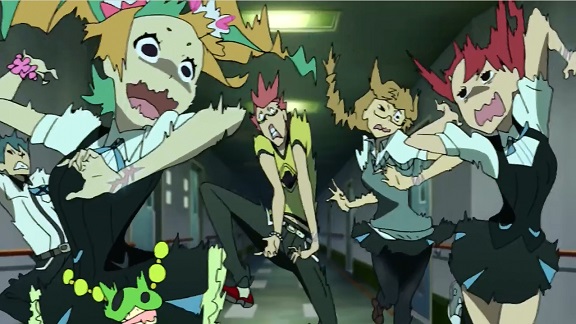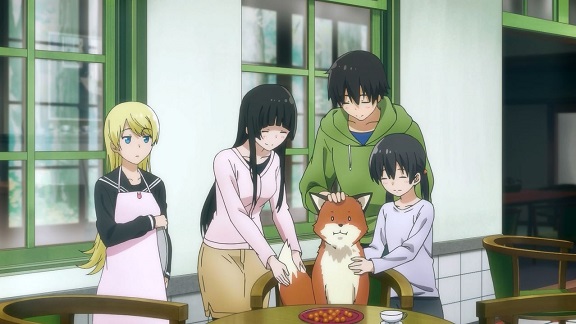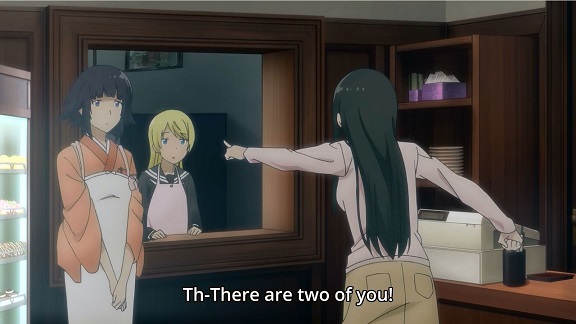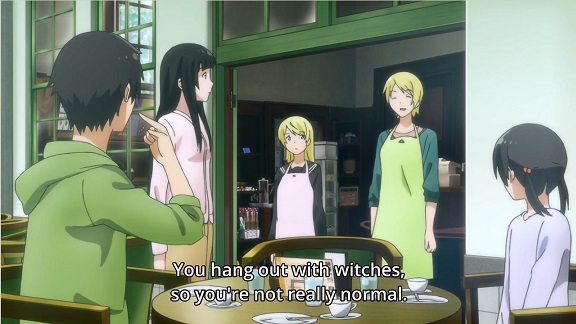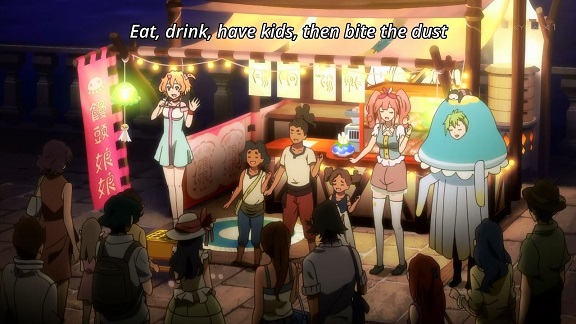
After a pre-opening scene of Windermerians scheming, the meat of the episode takes place at the jellyfish festival on Ragnar, as almost the entire Walkure crew is roped in to sell jellyfish buns for Nyannyan — the pub/hostel the men are staying at. Freyja and best Couple, together with the Nyannyan kids do a little promotional song which of course immediately made me think of that other famous promo song. It’s incredibly cute and what better life advice than eat, drink, have kids, then bite the dust?

Meanwhile, as in battle, Hayate and Mirage were stuck in a supporting role, grilling the actual jellyfish, as Hayate wonders why there are so many couples at the festival. I like the interplay between the two this entire episode. Unlike with Freyja, who wears her heart of her sleeve, Mirage is guarded in what she says, but the way she and Hayate act around each other speaks of a familiarity and trust that they lacked in the first few episodes. It’s gratifying to see that sort of subtle character growth, that the series trust its viewers enough to not over explain things.
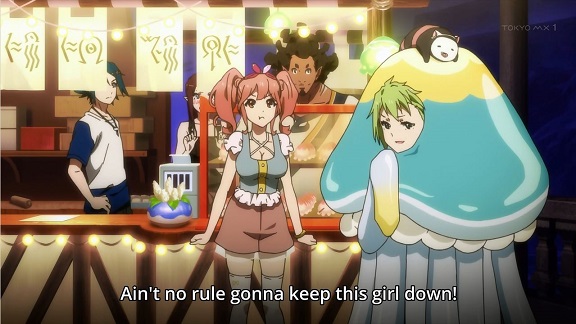
As for why there are so many pairs at the festival, Best Couple knows (of course): tonight, everybody’s wearing matching underpants. Or rather, the jelly fish festivals is meant for couples, as confessing your love underneath the rising jellyfish means it will last forever. Best Couple were very much on form the first half of this episode, pointing out one of the secondary love triangles to the Oblivious Main Trio. Messer loves Kaname, but Kaname likes Arad, the commander of the Delta Squadron. And Messer is leaving for a new assignment. Which is why Best Couple invites both him and Kaname over to the festival, to make some good memories before he leaves. So nice of the lesbian couple to get the straight kids hooked up too.
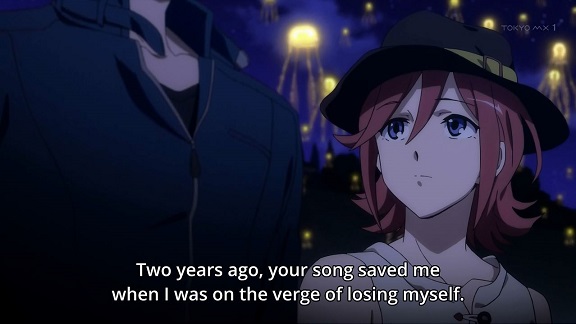
Oh Messer, poor Messer. After his secret weakness finally came out last episode, after it turned out the model fighter pilot had legs of clay, there was no way he could continue in Delta Squadron. So it’s off to a training squadron for him, never to fight again. Before he goes though, he has to tell Kaname what she means to him, how she saved him, in the process sending death flags up left, right and centre. His death at the end of the episode therefore isn’t a surprise, but fits. The best pilot in the squadron, coming back to save it when it finds itself in a pinch, only to die at the hands of his rival, not quite good enough in the end despite Kaname seeing for him, keeping the Var syndrome in check. A turning point for the series, as Windermere’s true strength is finally revealed and Walkure/Delta Squadron is left lacking. And with that Messer’s part in the story has ended.
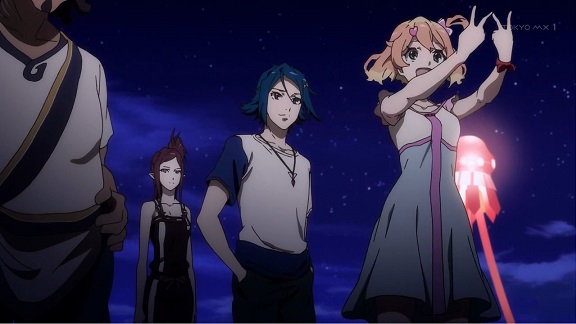
Which brings us back to Mirage. As a pilot she superficially resembles Messer as opposed to Hayate’s more instinctive approach, but perhaps without Messer innate talent. In the very first episode we already got a hint that she, for all her drive to succeed, might be actually the worst pilot in the squadron. And as we saw a few episodes afterwards, coming as she does from a long line of badass fighter pilots, the pressure and expectations heaped upon her must be huge. If you compare her to either Hayate or Freyja, she doesn’t have a goal or ambition of her own, but rather seems to be driven by what is expected of her rather than what she wants to do herself. Storywise, either she or Hayate now has to step up to fill Messer’s shoes; normally it would be the male lead who’d do so, but wouldn’t it be interesting to have Mirage do it instead, finding her own role despite not actually having the same sort of passion as Hayate has?
